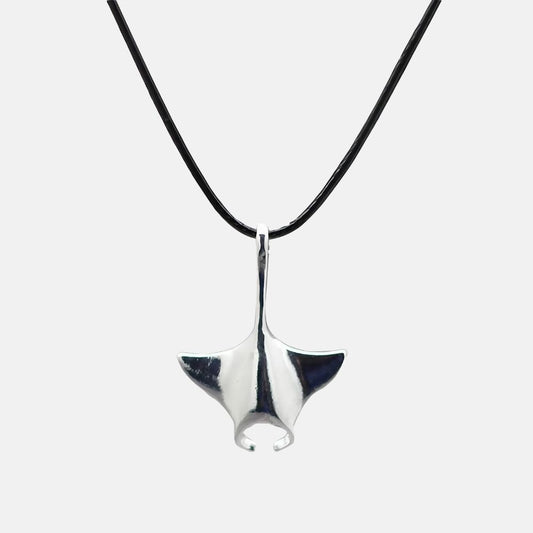
15 things to know about the abyss
Ahoy, sailors ! When we sail the vast oceans , the depths beneath our ships are often unknown and mysterious. The abyss, these dark and deep areas, are filled with secrets that we have not yet fully unlocked.
In this article, we'll dive into the abyss to explore 15 things you need to know about these uncharted depths. So hoist up the Jolly Roger and get ready for an underwater adventure!

1. Definition of the abyss
What are the abyss?
The abysses are the deepest , darkest areas of our oceans, located at depths ranging from 2,000 to 6,000 meters. These are extreme environments with living conditions very different from those we experience on the surface.

2. Extreme pressure
The impact of pressure on life in the abyss
In the abyss, the pressure is intense. At a depth of 4,000 meters, the pressure reaches 400 atmospheres, approximately 4,000 times the pressure at sea level. Despite this, life finds a way to thrive, with creatures adapted to withstand these extreme conditions.
3. Cold temperatures
The temperature in the depths
Temperatures in the abyss vary between 2 and 4 degrees Celsius . This may not seem very cold, but it's low enough to make survival difficult for many organisms. Creatures from the deep have evolved adaptations to survive in this frigid environment .
4. Total darkness
Life without light
Darkness reigns in the abyss. Beyond 1,000 meters depth, sunlight does not penetrate, making these depths completely dark. The organisms that live there must adapt to life without light, using bioluminescence to attract prey and to communicate.
5. Underwater mountains
The reliefs of the deep ocean
The abyss is also home to underwater mountains , called seamounts. Some of these mounts rise more than 4,000 meters above the ocean floor, forming underwater islands that are hotspots for marine life.
6. Ocean trenches
The deepest areas
Ocean trenches are the deepest places in the oceans, where tectonic plates meet and plunge into the Earth's mantle. The Mariana Trench is the deepest, with a maximum depth of 11,034 meters.
7. The mysterious life of the abyss
The amazing creatures of the deep
The abyss is home to an incredible diversity of creatures, some of which seem straight out of a science fiction film. These creatures include the lanternfish , the giant squid , and the deep-sea jellyfish . Many of these organisms have evolved unique adaptations to survive in their extreme environments.
8. Bioluminescence
Natural lighting of the depths
Bioluminescence is a common characteristic among deep-sea organisms. This phenomenon allows creatures to produce their own light through internal chemical reactions. Bioluminescence is used to attract prey , camouflage, and communicate.
9. Hydrothermal vents
Oases of life in the abyss
Hydrothermal vents are geological structures that emit hot, mineral-rich water. They create oases of life in the abyss, where organisms such as giant tube worms, blind shrimp and chemosynthetic bacteria thrive using the minerals to produce energy.
10. Continental drift
How the abyss influences geology
The abyss plays an important role in continental drift. The tectonic plates that make up the Earth's crust are constantly moving, and interactions between these plates on the ocean floor influence the formation of mountains and ocean trenches .
11. Exploring the abyss
The challenges of exploring the depths
Exploring the abyss is a major challenge due to the extreme conditions and difficulty of access. Specially designed submarines and remotely operated vehicles are used to study these depths, but much remains to be discovered.
12. Pollution of the abyss
Human waste in the depths
Unfortunately, human activities have also affected the abyss. Plastic pollution , chemical waste and lost fishing nets have been found even in the remotest depths, threatening marine life and fragile ecosystems.
13. The resources of the abyss
The riches of the depths
The abyss contains many valuable resources, such as manganese nodules and metal sulfides. Deep-sea mining is being considered to extract these resources, but this raises environmental concerns about the impact on marine ecosystems.
14. Secrets of the Abyss
Exciting scientific discoveries
The abyss is a source of scientific and medical discoveries . Deep-sea organisms produce unique molecules and adaptation mechanisms that can inspire new drugs , innovative materials and cutting-edge technologies.
15. Protection of the Abyss
Efforts to preserve deep marine ecosystems
Faced with the threats of pollution and exploitation of resources, the protection of the abysses is essential to preserve biodiversity and fragile ecosystems . International organizations and governments work together to regulate deep-sea activities and create marine protected areas in the deeps.
Conclusion
Here, sailors , is a glimpse of what lies hidden in the depths of our vast ocean. The abyss is a mysterious and fascinating world that constantly reveals new secrets to us.
As sailors, we have a responsibility to protect these underwater treasures and respect the life that thrives in the darkness. So keep these 15 things in mind the next time you sail the seven seas and remember that the beauty and mystery of the ocean is not only found on the surface, but also in the unexplored depths.
Frequently Asked Questions
Q: What is the minimum depth for an environment to be considered Abyss?
A: The abyss generally begins at a depth of about 2,000 meters below the ocean surface.
Q: What species can be found in the abyss?
A: The abyss is home to an incredible diversity of species, many of which exhibit unique adaptations to survive in this extreme environment. Here are some examples of species that can be found in the abyss, including the blobfish:
-
Blobfish (Psychrolutes marcidus): The blobfish is an unattractive bottom-dwelling fish, often considered one of the ugliest animals . It lives in deep waters off Australia and New Zealand. Its gelatinous body and low density allow it to float above the seafloor without expending energy on swimming.
-
Lanternfish (Anglerfish): These carnivorous fish are known for their strange appearance and unique hunting technique, which involves using a bioluminescent extension to lure prey to their mouth.
-
Giant squid (Architeuthis): These giant squid can reach lengths of 13 meters or more and are among the largest invertebrates known. They are known for their powerful tentacles and huge eyes.
-
Grenadier (Coryphaenoides): This bottom-dwelling fish lives in the abyssal depths and feeds primarily on organic debris falling from the top of the water column.
-
Giant tube worm (Riftia pachyptila): These worms can reach up to 2.4 meters in length and live near hydrothermal vents. They feed on chemosynthetic bacteria which transform the minerals emitted by chimneys into energy.
-
Blind shrimp (Rimicaris exoculata): These shrimp also live near hydrothermal vents and have symbiotic bacteria that help them feed on chemical compounds in the water.
These species represent only a small part of the diversity of organisms that can be found in the abyss, and many more species remain to be discovered.
Q: How can abyssal animals withstand extreme pressure?
A: Deep sea animals have evolved various adaptations to withstand extreme pressure. For example, they often possess soft , flexible bodies , reduced or absent skeletons, and body cavities filled with incompressible fluids, which help them resist pressure without deforming or rupturing.
Q: What is the main food source for organisms living in the abyss?
A: The majority of deep-sea organisms rely on " marine snow ", which is organic matter from the upper layers of the ocean. This includes dead plant and animal debris, droppings, and other particles that slowly sink to the bottom. Some organisms, such as chemosynthetic bacteria , obtain energy from minerals and chemical compounds found in hydrothermal vents.
Q: How many species are estimated to live in the deep?
A: It is difficult to give a precise figure due to the lack of data and the fact that new species are regularly discovered. However, the abyss is estimated to be home to tens of thousands of species, many of which remain unknown.
Q: How fast are tectonic plates moving on the ocean floor?
A: Tectonic plates generally move at a speed of a few centimeters per year. This speed can vary depending on the forces at play, such as mantle convection, gravity and friction between plates.
Q: How much of the oceans are still unexplored?
A: It is estimated that around 80% of the seabed remains unexplored . The abyss, in particular, is very difficult to study due to the extreme conditions and depth.
Q: What is the average lifespan of an organism living in the abyss?
A: The lifespan of deep-sea organisms varies greatly depending on the species. Some animals, such as deep-sea fish, can live for several decades, while others, such as deep-sea jellyfish, have shorter lifespans, ranging from a few months to a few years .
Q: What is the share of bioluminescent species among the organisms living in the abyss?
A: It is difficult to give an exact percentage, but it is estimated that more than 75% of species living in the abyss are capable of bioluminescence. Bioluminescence is particularly common among fish.
































